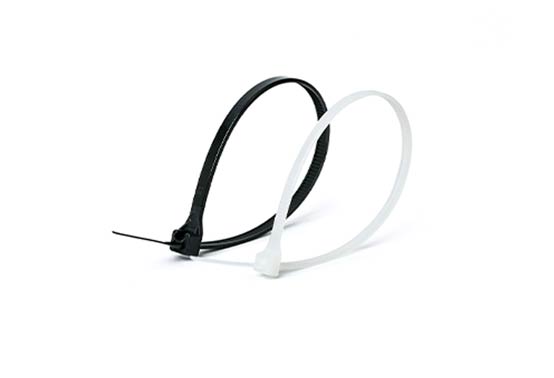Tel
0577-62795555
Tel
0577-62795555
In the world of aviation, every single component plays a crucial role in ensuring the safety and reliability of flights. One such seemingly small but significant component is the aviation cable tie. These unassuming fasteners are essential for maintaining the integrity of aircraft wiring systems, contributing to the overall safety of the aircraft and its passengers. In this blog, we will delve into the importance of aviation cable ties and their role in aviation maintenance and safety.
Aviation cable ties, also known as zip ties or wire ties, are used to bundle and secure electrical wires and cables in aircraft. The organized arrangement of wiring is vital for preventing tangling, abrasion, and interference between wires. In the confined spaces of an aircraft, the proper routing and securing of cables help maintain clear pathways for maintenance personnel, reduce wear and tear, and minimize the risk of electrical faults.

Aircraft are subject to various types of vibrations during flight, which can be caused by engines, turbulence, and maneuvers. These vibrations can potentially lead to cable chafing and movement. Aviation cable ties with vibration-dampening properties help mitigate the impact of these vibrations, ensuring that cables remain securely fastened and protected from potential damage. This reliability is paramount for maintaining communication, navigation, and safety systems. In the aviation industry, safety standards are of the utmost importance. Aviation cable ties are often designed to be fire-resistant or self-extinguishing. This is a critical feature, as fires on aircraft can have catastrophic consequences due to the confined environment and limited escape routes. Fire-resistant cable ties add an extra layer of protection, preventing the spread of flames and contributing to the overall fire safety strategy of the aircraft.

Aviation cable ties come in various types by the cable ties manufacturer to suit different needs. Standard cable ties are versatile and commonly used for bundling cables. However, in aviation, there are specialized cable ties designed for specific applications, such as high-temperature areas, areas with exposure to chemicals or fluids, and even areas with electromagnetic interference. These specialty ties ensure that cables are secured effectively in diverse and challenging environments within the aircraft.
While aviation cable ties play a pivotal role in ensuring flight safety, their effectiveness heavily depends on proper installation. The ties must be correctly tightened to avoid over-compression or under-compression of cables, both of which could lead to damage over time. Additionally, over-tightening could potentially cut into the insulation of wires, creating a safety hazard. Aviation maintenance protocols require regular inspection of cable ties to identify signs of wear, damage, or degradation. This preventive measure ensures that any compromised ties are replaced promptly, minimizing the risk of cable failure during flight. Regular inspections also provide an opportunity to verify that the cables are still properly organized and secured.
In the complex and high-stakes world of aviation, even the smallest components can have a massive impact on flight safety and performance. Aviation cable ties might appear insignificant, but their role in bundling, securing, dampening vibrations, and enhancing fire safety is indispensable. By understanding their importance, selecting the right types, ensuring proper installation, and conducting regular inspections, aviation professionals contribute to safer skies and more reliable flights for passengers around the world.
Related Cable Tie Articles



